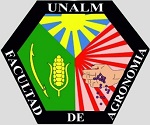Lead Phyto extraction in the Huachipa Zoological Park through the use of Tagetes erecta associated with a mycorrhiza and EDTA
DOI:
https://doi.org/10.21704/pja.v4i1.1462Keywords:
Phytoextraction, mycorrhizae, EDTA, lead, recreational parksAbstract
Phytoremediation is a potentially less costly approach to treat contaminated soil. Here, the phytoremediation capacity of marigold (Tagetes erecta) in conjunction with EDTA and mycorrhizae was analyzed. Specifically, the ability of the marigold to extract lead from contaminated soils in the Bird Forest Zone of the Huachipa Zoological Park (PZH) was evaluated. Marigold was planted in main areas of interest within the PZH. Plants were treated with different concentrations of mycorrhizae (0 and 0.5 g/kg) and EDTA (0, 0.5 and 1 mg/kg) and later analyzed by atomic absorption spectrophotometry for lead concentrations in the aerial parts and roots of the plants at the end of the experiment. We show that marigold has the ability to extract lead; and under the conditions of the experiment, mycorrhizae did not improve the extraction efficiency. However, EDTA did increase the amount of lead extracted, thus affecting the physiological development of the plant.
Downloads
References
Amna, Masood, S., Syed, J.H., Munis, M.F.H., & Chaudhary, H.J. (2015). Phyto-extraction of Nickel by Linum usitatissimum in Association with Glomus intaradices. International Journal of Phytoremediation, 17(10), 981–987. https://doi.org/10.1080/15226514.2014.989311
Castillo, O.S., Dasgupta-Schubert, N., Alvarado, C.J., Zaragoza, E.M., & Villegas, H.J. (2011). The effect of the symbiosis between Tagetes erecta L. (marigold) and Glomus intraradices in the uptake of Copper(II) and its implications for phytoremediation. New Biotechnology, 29(1), 156–164. https://doi.org/10.1016/j.nbt.2011.05.009
Corzo, I., & Velásquez, M. (2014). El Plomo y sus efectos en la salud. Acta Médica del Centro, 8(3), 141–148.
Delgadillo-López, A.E., González-Ramírez, C.A., Prieto-García, F., Villagómez-Ibarra, J., & Acevedo-Sandoval, O. (2011). Fitorremediación: Una alternativa para eliminar la contaminación. Tropical and Subtropical Agroecosystems, 14(2), 597–612.
Diez, L. (2008). Fitocorrección de suelos contaminados con metales pesados: Evaluación de plantas tolerantes y optimización del proceso mediante prácticas agronómicas. [Doctoral thesis, Universidad de Santiago de Compostela].
Duarte, A., Cachada, A., & Rocha-Santos, T. (2017). Soil pollution—From monitoring to remediation. Cambridge: Academic Press.
Duñabeitia, M., Rodríguez, N., Salcedo, I., & Sarrionandia, E. (2004). Field mycorrhization and its influence on the establishment and development of the seedlings in a broadleaf plantation in the Basque Country. Forest Ecology and Management, 195(1–2), 129–139. https://doi.org/10.1016/j.foreco.2004.02.038
Gaur, A., & Adholeya, A. (2004). Prospects of arbuscular mycorrhizal fungi in phytoremediation of heavy metal contaminated soils. Current Science, 86(4), 528–534. https://www.jstor.org/stable/24107905
Huang, J.W., Chen, J., Berti, W.R., & Cunningham, S.D. (1997). Phytoremediation of Lead-Contaminated Soils: Role of Synthetic Chelates in Lead Phytoextraction. Environmental Science and Technology, 31(3), 800–805. https://doi.org/10.1021/es9604828
Juárez, H. (2006). Contaminación del Río Rímac por metales pesados y efecto en la agricultura en el Cono Este de Lima Metropolitana. [Master’s thesis, Universidad Nacional Agraria La Molina]
Lombi, E., Zhao, F.J., Dunham, S.J., & McGrath, S.P. (2001). Phytoremediation of Heavy Metal Contaminated Soils: Natural Hyperaccumulation versus Chemically Enhanced Phytoextraction. Journal of Environmental Quality, 30(6), 1919–1926. https://doi.org/10.2134/jeq2001.1919
Marchiol, L.; Sacco, P.; Assolari, S.; Zerbi, G. (2004). Reclamation of polluted soil phytoremediation potential. Water, Air, and Soil Pollution, 158(1), 345–356.
Mendez García, E. F. (2009). El Cultivo de Marigold (Tagetes erecta L.) en el Perú: Presente y futuro. [Master’s thesis, Universidad Nacional Agraria La Molina]
Servicio de Agua Potable y Alcantarillado de Lima - SEDAPAL (2009) Convenio de Cooperación Institucional No. 002-2009 / MINSA-SEDAPAL
Shah, K., Mankad, A.U., & Reddy, M.N. (2017). Lead Accumulation and its Effects on Growth and Biochemical Parameters in Tagetes erecta L. Int. J. Life. Sci. Scienti. Res., 3(4), 1142–1147. https://doi.org/10.21276/ijlssr.2017.3.4.7
Sinhal, V.K., Srivastava, A., & Singh, V.P. (2010). EDTA and citric acid mediated phytoextraction of Zn, Cu, Pb and Cd through marigold (Tagetes erecta). Journal of Environmental Biology, 31(3), 255–259.
Tello, L., Jave, J., & Guerrero, J. (2018). Análisis de Cuantificación de Plomo en Suelos de Parques Recreacionales de la Ciudad de Lima—Perú. Ecología Aplicada, 17(1). https://doi.org/10.21704/rea.v17i1.1168
Zhao, F.J., Hamon, R.E., Lombi, E., McLaughlin, M.J., & McGrath, S.P. (2002). Characteristics of cadmium uptake in two contrasting ecotypes of the hyperaccumulator Thlaspi caerulescens. Journal of Experimental Botany, 53(368), 535–543. https://doi.org/10.1093/jexbot/53.368.535










